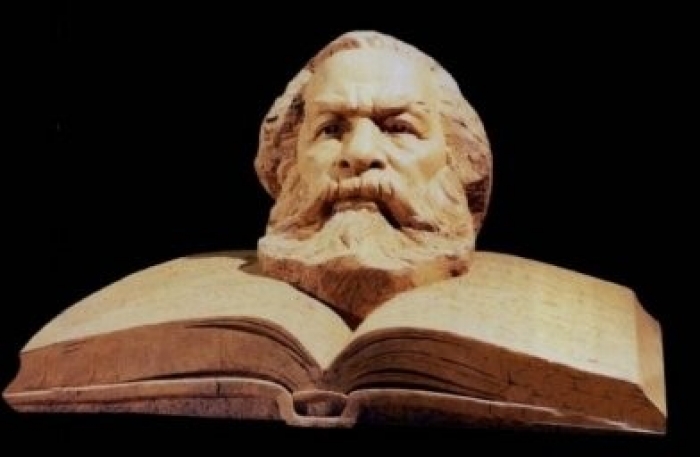
Communist Manifesto: Reading it in the Context of “Caste Struggle”
Communist manifesto: reading it in the context of “caste struggle” on the eve of the 200th birth anniversary of Karl Marx
The year marks the 200th birth anniversary of Karl Marx. He was born on 5th May 1818. In 1848, he published a political treatise coauthored with his lifelong friend, Engels, known throughout the world as “the Communist Manifesto”, this small track has influenced revolutions throughout the world and hence it is important to understand what it is, its influence, and it is relevance today, particularly with reference to India. Renowned economist and public intellectual of our times, Yanis Varoufakis has written a cogent and analytical introduction followed by an epilogue when it was recently published by Oxford. His commentary is the general analysis of the power of the text and its relevance to understanding how capitalism works and what can be the possible ways out through it.
Our take will be to understand the manifesto from the Indian point of view and more clearly from the point of view of breaking caste in India. Indian communism is nothing but a harlot of Brahminism. The Indian communism has never considered the problem of the caste system in India in their “revolution” as they clearly missed the basic theory of revolution expounded in the “communist manifesto”. Before we proceed, we pause here for a moment to understand that Babasaheb Ambedkar was the keen reader of Marxist philosophy and he went to compare Marx and the Buddha in his very important writing “Buddha or Marx” and his position is summarised well and clearly in this track. He agreed with the Buddhist methods of bringing change in the world and he did not agree with “violence” as the only way out of the present tyranny of “capitalism” and “Brahminism”. Like Marx, he envisioned the real democracy of the many than the dictatorship of a few.
Let us look at how this text can be read in the current situation.
The manifesto claims that the histories of all the existing societies are the history of class struggle. In India, the struggle between the classes is going as well and the struggle is recorded in various myths, histories, and cultures of India. Indian is still going through the class struggle, but the classes in case of India are “enclosed classes”, otherwise known as the “castes”. The manifesto also talks about the existence of many classes in the society calling it “subordinate gradation”, and Indian is the case of “graded subordination”. The manifesto claims that in the modern times, all the classes fall into two classes: Bourgeoisie and Proletariat. This is where Babasaheb Ambedkar disagreed with Communist thinking on classes. In India, the proletariat in the form of the “labouring classes” come from SC, STs, OBCs, and converted minorities, and Bourgeoisie mainly comes from the “Brahmin-Bania” axis if we borrow the terms from the manifest to talk of Indian categories.
In India, there is no division of labour, but as Babasaheb Ambedkar wrote: “there is a division of labourers”. While the powerful and international surge of “capitalism” cannot be denied, but the “capitalism” has not really created the class of “proletariat” in India and it cannot create the army of exploited people who are in majority in this country but divided due “graded inequality” that comes from the religious beliefs. Therefore “Free Trade” as the exploitative characteristic of capitalism though create the problems as enumerated by Marx, but in the Indian case, the capitalism frees at least some of the members of the “exploited classes” to mobilise the masses.
The manifesto attributes capitalism the creation of the “state” which belongs to a and influenced by the bourgeoisie. Instead, the manifesto suggests the overthrow of the state by the “revolution” and advocates “democracy”. Babasaheb Ambedkar in case of India suggested the constitutional revolution that will overthrow the Bourgeoisie-Brahmin-Bania axis through the formation of public than a class. Ultimately, the manifesto has a vision of “classless” society when the whole mechanism of government is brought for the service of the larger humanity, instead of a few people ruling the larger masses. In case of India, this vision aligns with the vision of “casteless” society where the Government is brought in the service of larger masses of people. The means of production, the exchange of products, and consumption of products is not controlled by the “bourgeoisie” but they become “democratic” and at the service of all.
Similarly, in India, the means of production is controlled by a handful of a few “Brahmin-Banias” and unless the means of productions are made democratic, the casteless society cannot come into being.
Author – Mangesh Dahiwale, Human Rights Activist



+ There are no comments
Add yours